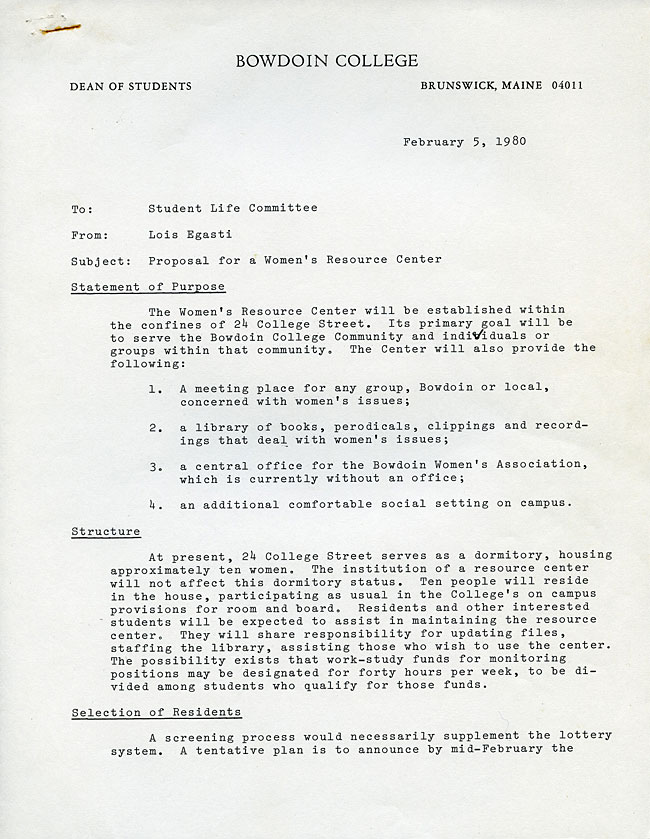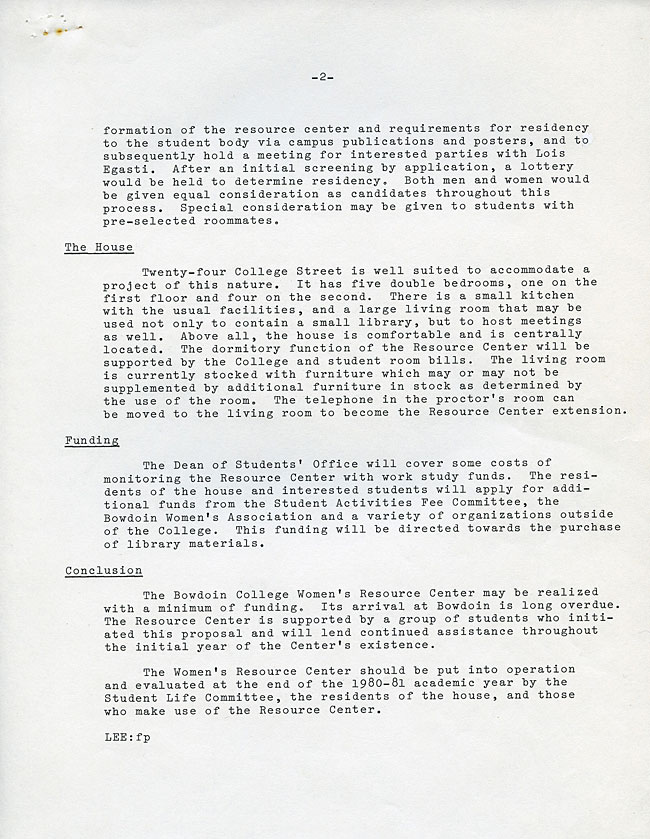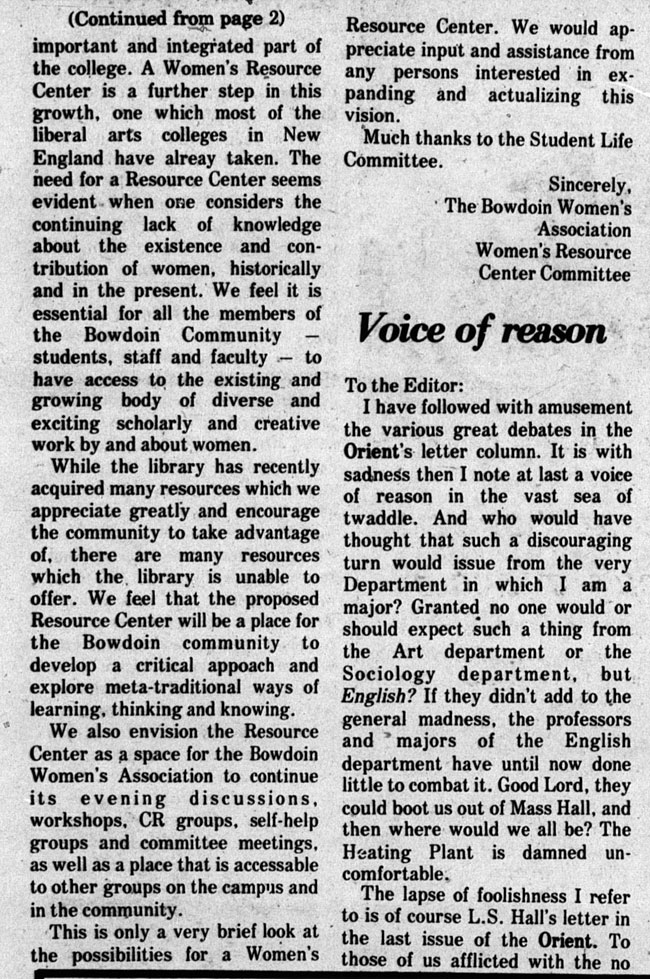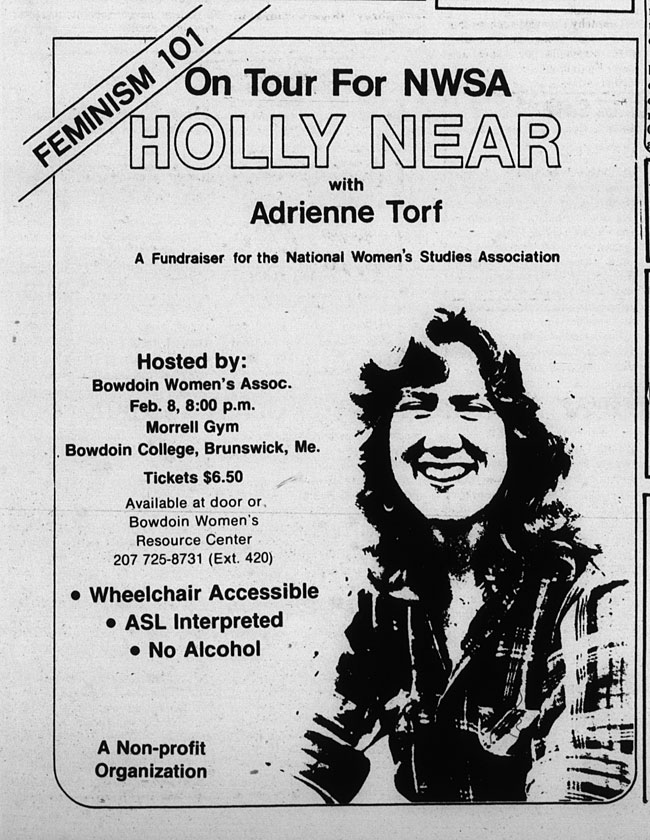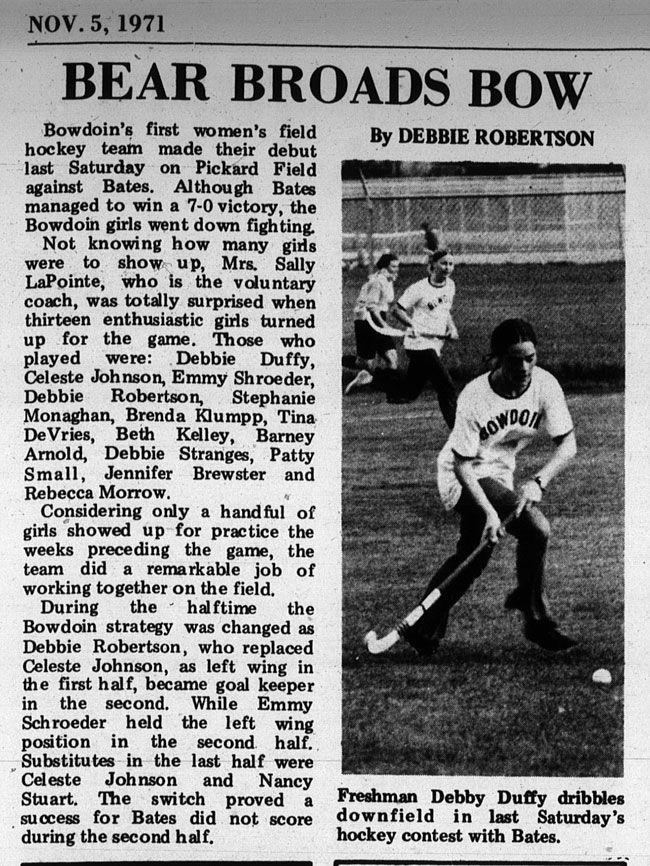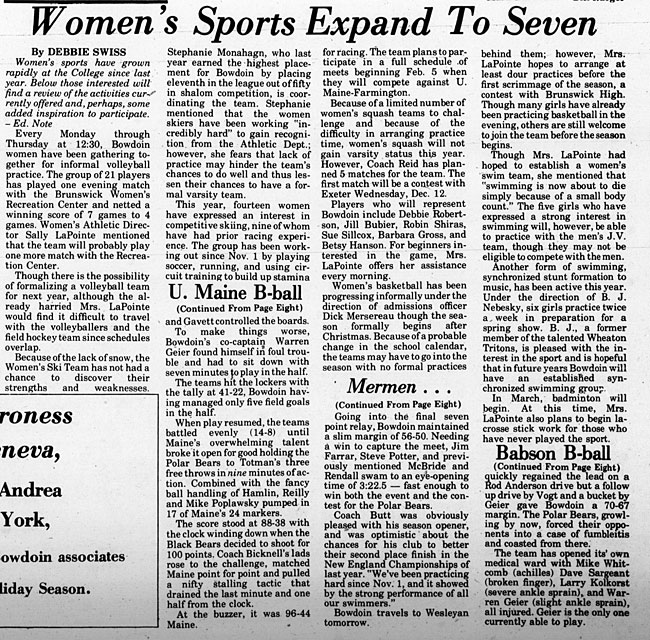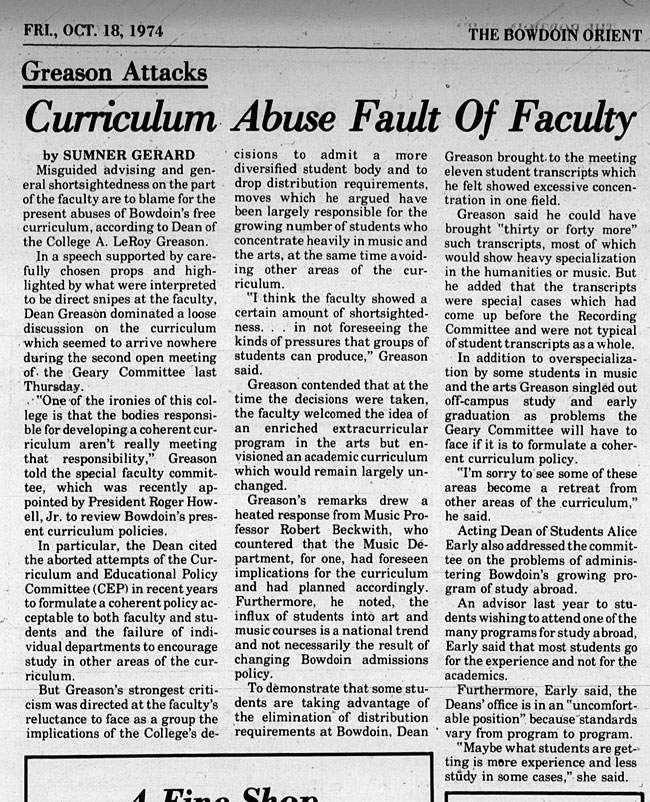In February 1980, Lois Egasti, Bowdoin’s Dean of Students, sent this proposal to the Student Life Committee requesting that a “long overdue” Women’s Resource Center be established at 24 College St (Document CS, 61.1). At the time there were 10 women living at 24 College St. The space was to remain a dormitory in addition to a space designated for Bowdoin women. That the space was meant for Bowdoin women is evidenced by the name, Women’s Resource Center, and by the proposal’s suggested purposes for the center. The Women’s Resource Center was to be a “comfortable social setting” and serve as the official headquarters for the Bowdoin Women’s Association. The proposal held that “any groups, Bowdoin or local, concerned with women’s issues” could meet in the center.
According to the feminist issue of To the Root published in March 1980, the regular library did not have any periodicals related to women but did have a subscription to Playboy. One main purposes of founding a Women’s Resource Center was to create a space for a library of material by and about women.
The letter to the editor of the college newspaper on February 22, 1980 announces the acceptance of the proposal and invites people to participate in the Women’s Resource Center (Document CS, 61.2). From the beginning, the members of the Women’s Resource Center Collective attempted to raise awareness and build community. The opening of the center marked an important transition for women at Bowdoin. Women’s presence on campus would be claimed and emphasized on a whole new level, in the form of a small, brown house on College St.
